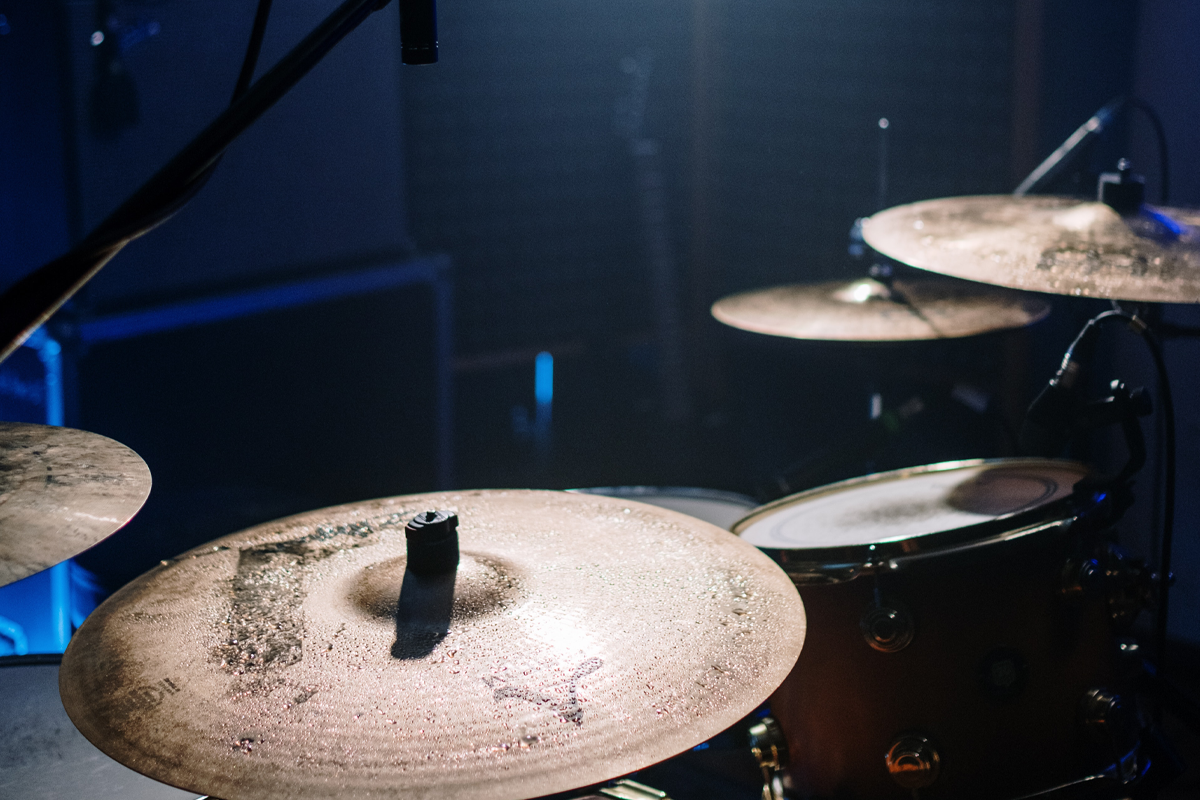
Mixing drums can make or break the overall sound of a mix. As a drummer and or artist/songwriter, it’s important to understand the basics of drum mixing so you can make informed decisions during both the creative and production process. Similarly and more significantly, for sound engineers, it’s essential to have a solid understanding of how to mix drums in order to create a cohesive sound that showcases the drum performance and enhances the final mix in it's entirety. If you're just getting started, we've put this general guide together to get you on your way.
Here are 10 steps to help you effectively mix drums:
Set your Levels:
Start by setting the faders to their lowest setting and then bring in the various elements and set the levels of the individual drum hits (snare, kick, toms, cymbals, etc.). Use your ears to balance the volume of each element in relation to the other drums and instruments.
EQ the Overheads:
Cymbals are captured by overheads, that also broadly capture the sound of the drum kit as a whole. Start by cutting unwanted frequencies on the overheads. Cutting low-end rumble and high-end cymbal sizzle is generally the common approach here.
Add EQ to Individual Drums:
After balancing the overheads, add EQ to individual drums to help them sit better in the mix. For example, you may want to boost the high-end on the snare to make it more cutting, or cut low-end on the toms to prevent them from conflicting with the kick drum.
Unwanted drum bleed should be eliminated at the recording stage. Our professional drum samples are of the highest quality and can be used to replace drum hits where bleed or noise or any other unwanted sound is present. Visit Macdrum.com for some amazing sounding samples.
Use Compression:
A powerful tool for controlling the dynamic range of the drums is of course compression. Compression can be used to increase the overall volume of the drums in the mix and to balance out the level of each individual drum track respectively.
Use Reverb:
Reverb helps in providing the drum mix with a sense of depth and space. Experiment with various reverb settings to determine which one delivers the best sound for your track.
Pan the Drums:
To produce a stereo image of the drum kit, use panning. Pan the toms to the left and right, the overheads in a stereo image, and the snare and kick to the centre.
Add Percussion:
If desired, add further percussion elements to the overall drum mix, such as bongos, tambourines, congas or anything else that will enhance the track. It's important to not go overboard here however and make sure what you add enhances what's already there. Less can often be more.
Experiment with Effects:
Experiment with other effects, such as delay, chorus, or flange, to give the drum mix more character and intrigue.
Check the Mix in Context:
Always assess the drum mix in context with the overall production. Make any necessary adjustments based on how the drums fit with the other instruments.
Reference Other Mixes:
Finally, look at other drum tracks that have been professionally mixed to see how they have been treated. Use them as a guideline for your own compositions.
Mixing drums
Mixing drums is an important part of the music production process, and it’s crucial to get it right in order to achieve a professional-sounding drum sound. A well-mixed drum kit can help to bring the entire production together, creating a cohesive and dynamic sound that showcases the skill of the drummer.
Kick drum sounds
A key element in drum mixing is of course the kick drum. The kick drum provides the foundation of the drum sound, and it’s essential to get it right in order to achieve a powerful and punchy drum mix. Experiment with different EQ and compression settings to find the sound that works best for your production.
Snare drum
Another important element of drum mixing is the snare drum. The snare is often the most prominent drum in the mix, and it’s important to find the right balance between a snare sound and the other drum elements. Again, experiment with different EQ and compression settings to find the sound that works best for your mix. Make sure the kick and snare work together and not against each other. The kick and snare drums often form the foundation of a drum sound and it's important to recognise this before you start mixing drums.
Drum bus
The overall sound of your drum kit can be significantly enhanced by mixing the drums while using a drum bus. All of your drum mics are combined into one channel via a sub-mix called a drum bus. This enables you to produce a consistent and well-balanced drum mix by processing the combined drum sound with a single equalisation (EQ) and dynamics (compression) effect. It's important to pay attention to how the snare, kick, and toms interact with one another when building up a drum bus. By using a snare-specific EQ or compression setting, you can use the drum bus to improve the overall snare sound before balancing it with the rest of the kit. The drum bus is an effective instrument for modifying the sound of your drum mix, so try to experiment with different processing techniques to get the best results.
(Drum 'buss' seems to be a popular spelling online, 'bus' is correct!)
Overheads
The consideration of overhead and room mics is a significant part of drum mixing. Overheads capture the sound of the cymbals and provide a good representation of the drum kit’s overall sound. Start by cutting frequencies on the overheads that are not needed and use EQ to bring out the desired sound. Room mics capture the sound reflections and overall sound of the room.
(Condenser mics are often used as overheads because they have a fast, accurate transient response, making them well suited for capturing the nuances of a drum kit.)
Conclusion
In conclusion, drum mixing is a critical part of the music production process. Understanding the importance of the kick drum, snare drum, and overhead mics is key to achieving a professional-sounding drum mix. Experiment with different EQ and compression settings, and reference other professionally mixed drum tracks to find the drum sounds that work best for your production.
Whether you’re a drummer or a mixer, these steps should help you effectively mix drums, ensure your drum set sounds natural, bringing your production to the next level.


